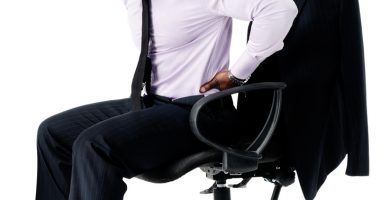Back awareness week 2015
Back Pain and Children
It was Back awareness week last week (5th to the 11th October), and the focus this year was back pain experienced by children.
New shocking statistics:
- One quarter of UK secondary school pupils suffer from regular or daily back pain
- School bag burden was associated with a ten-fold higher rate of back pain
- Back pain was also linked to prolonged sitting.
Like adults, children can suffer from back pain as a result of a variety of lifestyle activities. And like adults, there are number of things that parents and carers can do to prevent issues arising.
If your child does complain of back pain, it is important to seek advice from qualified professional, such as an osteopath. An osteopath will help to establish the cause of the problem and will provide advice on treatment, or refer you for further examinations if required.
Good school bags
Children are often required to carry bags full of books, PE kits, musical instruments and other equipment to and from school. Parents should try to limit the weight of school bags as much as possible and invest in a good quality back pack that the child should wear across both shoulders, ideally with a strap across the chest to keep the load close to their body. Packing the bag with the heaviest items (such as laptops and heavy books) closest to child’s body, will also make carrying more comfortable and less likely to strain the muscles of the back.
It is recommended childrens’ backpacks:
- Should weigh no more than 10 per cent of the child’s body weight.
- Should be worn on both shoulders so the weight is evenly distributed.
- Should have a padded back panel and wide padded straps for increased comfort.
- The heaviest items should be packed so they are closest to the spine, to reduce strain.
- The straps should be adjusted so the backpack sits high up on the back and a waist strap can be used so the pelvis can hold some of the load.
- Should only contain the necessities (i.e. books needed that day).
Limit screen time
Looking down to use smart phones, tablets and laptops for an extended period can pull the back and neck into an unnatural posture, resulting in pain. Placing limits on the time spent using devices and encouraging regular breaks may help to avoid problems. If your child has to use a laptop for homework, consider purchasing a support that elevates the screen to a height that allows him or her to sit up straight to look at it.
Regular exercise
A sedentary lifestyle is known to contribute to the risk of developing back pain, as well as contributing to obesity. Regular physical activity helps to keep the core muscles that support the spine strong and maintain flexibility, which will help to avoid back pain. Encourage lots of active play, walking, running, swimming, cycling etc to keep your child fit and healthy.
The right bed and pillow
Good quality sleep is vital for both physical and mental development. Make sure that your child has a good sized comfortable bed with a firm mattress and a pillow that supports their head without lifting it too high.
Supportive footwear
Teenagers are particular vulnerable when wearing unsupportive shoes as the foot bones continue to grow through adolescence. Abnormal loading of pressure through the feet can cause the structure of the bones to change. This can lead to a change in their gait and this may cause knee, hip and low back problems.
It seems to be teenage girls which are most affected as many are wearing ballet type pumps, which are far too flat and provide no support.
Without the correct support the arches, muscles and ligaments become stressed and strained. The typical pattern is that the foot/arches flatten and the lower leg turns inwards, causing the knees to work in an abnormal position and can contribute to knee or hip pain. If the shoes are too flat they are not providing any shock absorption and the teenager/child may also experience heel pain. If your child/teen insists on wearing a certain type of shoe that is not supportive enough, then you can insert a simple orthotic into the shoe, which will provide extra support.
It is recommended that school shoes:
- Should have a strap, velcro or laces to hold them on.
- Should be made out of natural or breathable fabric.
- Should have the necessary support and a small heel.
- Should have a deep toe box, so the toes have room to move and are not scrunched up.
Osteopathic Treatment for your child’s back pain
Your child’s back pain may benefit from osteopathic treatment. Using gentle manual therapy an osteopath will help to resolve any stresses and strains that are affecting their body and relieve their pain. They can also provide lifestyle advice that may help to prevent the problem from coming back.



